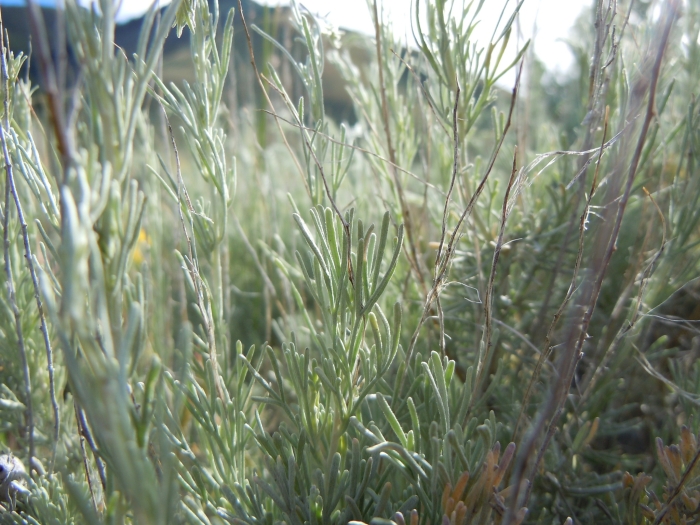Threetip Sagebrush
(Artemisia tripartita)
Threetip Sagebrush (Artemisia tripartita)
/
/

Matt Lavin
CC BY 4.0
Image By:
Matt Lavin
Recorded By:
Copyright:
CC BY 4.0
Copyright Notice:
Photo by: Matt Lavin | License Type: CC BY 4.0 | License URL: http://creativecommons.org/licenses/by/4.0/ | Rights Holder: Matt Lavin | Publisher: iNaturalist | Date Created: 2010-07-06T17:04:08-07:00 |

























Estimated Native Range
Summary
Artemisia tripartita, commonly known as threetip sagebrush, is an evergreen shrub native to the sagebrush steppe ecosystem, which includes areas within western North America such as British Columbia, Nevada, Montana, and Colorado. It is particularly adapted to dry, open areas and well-drained soils found in the Rocky Mountains and the Great Basin. Threetip sagebrush typically grows up to 7 feet tall and is characterized by its woolly, three-parted leaves. The plant is known for its aromatic quality and produces an abundance of seeds. It has a spreading habit, capable of vegetative reproduction through sprouting from shallow roots and layering.
Threetip sagebrush is valued for its drought tolerance and ability to thrive in poor, dry soils, making it suitable for xeriscaping and restoration projects. It is also used for erosion control due to its spreading roots. The dwarf subspecies, rupicola, reaches only about 6 inches in height and spreads to about half a meter, making it an excellent ground cover for rock gardens or dry slopes. In cultivation, threetip sagebrush requires minimal water once established and prefers full sun exposure. It is not commonly afflicted by diseases but can be susceptible to root rot if overwatered or planted in poorly drained soils.CC BY-SA 4.0
Threetip sagebrush is valued for its drought tolerance and ability to thrive in poor, dry soils, making it suitable for xeriscaping and restoration projects. It is also used for erosion control due to its spreading roots. The dwarf subspecies, rupicola, reaches only about 6 inches in height and spreads to about half a meter, making it an excellent ground cover for rock gardens or dry slopes. In cultivation, threetip sagebrush requires minimal water once established and prefers full sun exposure. It is not commonly afflicted by diseases but can be susceptible to root rot if overwatered or planted in poorly drained soils.CC BY-SA 4.0
Plant Description
- Plant Type: Shrub
- Height: 4-6 feet
- Width: 1-1.75 feet
- Growth Rate: Slow
- Flower Color: Green, Yellow
- Flowering Season: Summer, Fall
- Leaf Retention: Evergreen
Growth Requirements
- Sun: Full Sun, Part Shade
- Water: Low
- Drainage: Fast, Medium, Slow
Common Uses
Drought Tolerant, Erosion Control, Low Maintenance
Natural Habitat
Native to the sagebrush steppe ecosystem within western North America
Other Names
Common Names: Cut-Leaved Sagebrush
Scientific Names: , Artemisia tripartita, Artemisia tripartita var. tripartita,
GBIF Accepted Name: